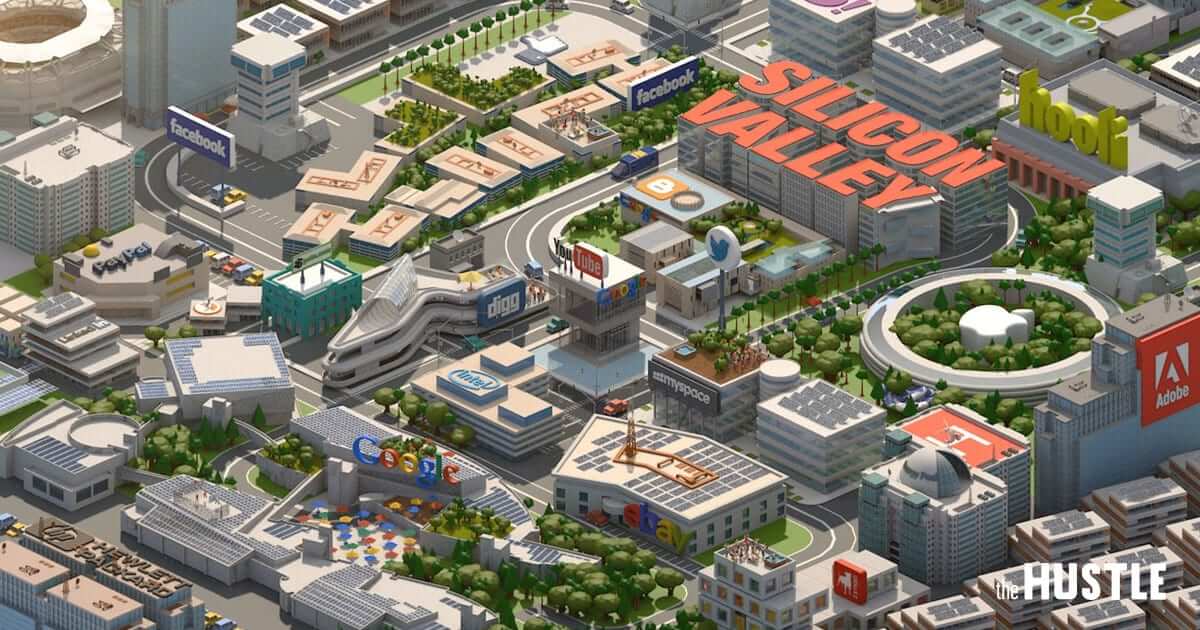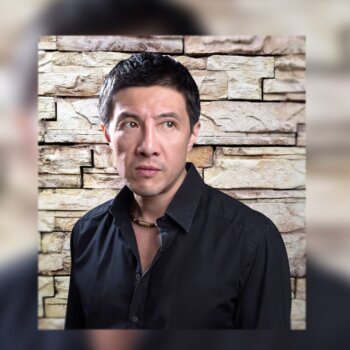As I write this, I have been in foreign territory for a little over a month. A month is very short to understand the workings of a place, as anyone knows who has lived away from home. Indeed, everything in this particular place, known to outsiders as Silicon Valley, is still very strange to me.
It would go too far to say I am in culture shock: I am not in a state of confusion. Things are too reminiscent of back home to experience true culture shock — or at least too familiar from the news I read and the television shows I watched back in the Netherlands. Instead I am slightly bemused by the whole place and its goings on.
Silicon Valley and the Sillicoids, which is my own “secret joke” name for its people, are not only familiar because they are part of some overarching Western cultural template. I have found, to my surprise, that the Valley’s social, cultural, economic, political and ideological practices can also be understood from the perspective of my profession. Which is good, because work is in fact the reason that I am here. Before you ask, no, I am not in business, tech or some other form of future focused job. On the contrary, I am someone who spends most of his time thinking about the past. I am an archaeologist.
LIVING FUTURE HISTORY
Silicon Valley is an exceptional place, which is clear to anybody who bothers to think about such things (and many do: Sillicoids are very self-aware of their status). Indeed, I too can’t help but feel that what is taking place here is history in the making. Whether this will be a curious chapter of Americana history or a series of events that will have an enduring and global impact, is a question that can only be answered by future scholars of the past. Still, living in this future past right here, right now, I’d say all signs point to the latter.
For this reason alone Silicon Valley is a highly interesting phenomenon for an (anthropologically inclined) archaeologist like myself. Which scholar of the past can say they lived in Rome in 42 BC, the Caribbean in AD 1492, Paris of AD 1789, or other “navels of the world” and had the chance to witness events unfolding before they became history? The fact it can be compared to these past places also shows that Silicon Valley is not so unique. This is good for archaeologists, who need to compare and connect places and events before they can make sense of them. Indeed, Silicon Valley’s history in the making is nothing entirely new. From a deep-time perspective it’s just another boom-town that through some unreplicable combination of factors became a global center.
LIGHTNING STRIKES THRICE…
Card of the clipper California, bound for the bountiful gold fields of California (Wikimedia Commons)
And a boom-town it is. In fact, Silicon Valley is a succession of boom-towns. Lightning has not struck once but thrice here – in that way it may be a bit unique among its boom-town brethren. Granted, the first boom was not silicon-based, the raw material used for making computer chips that gave this place its current name. The first boom-town happened because of good old gold. You don’t have to be a Caribbean archaeologist to understand there are some powerful economic, political and cultural forces that come into play when a gold rush happens, but it helps. For instance, there are some interesting parallels to be drawn between the Caribbean in the 16th and the “Wild West” in the 19th and early 20th century.
Like the early colonial Caribbean, when gold was found on January 24, 1848 at Sutter’s Mill, this instigated a global and en-masse movement of people and goods to the source of newly found wealth. In California, the closest major town, San Francisco, became the hub of this movement and riches that flowed from the Sierra Nevada Gold Fields. Unfortunately, just like had happened in the Caribbean, in the mad dash for territory, indigenous people were displaced or simply killed.
From topleft to right: Chinese labourers gold mining, Slaves mining gold in Cuba, Indians from Hispaniola, panning for gold in a river.
The reliance on forms of forced labour (Amerindians and Africans in the Caribbean, Africans and Chinese in California) is another very dark analogy that can be drawn. And like the colonization of the Caribbean had done for the Spanish empire, the opening and development of the West propelled the empire of the USA to world prominence. Like in the Caribbean, this history can be highlighted through specific events and the actions of a specific number of individuals. Like Christopher Columbus and other Spanish colonial entrepreneurs, some individuals managed to consolidate a lion’s share of the wealth and power that resulted from the gold rush.
Leland Stanford Sr., Jane Lathrop Stanford and Leland Stanford Jr. were three such individuals. Leland Sr. was the entrepreneur who was responsible for the successful completion of the first Transcontinental railway in the USA. The importance of this railway for the history of Silicon Valley cannot be overstated. First of all, because it allowed the wealth of California to be more easily transported and thus invested somewhere else, to generate more wealth — the railroads of the 19th century were the tax routes of the 21st century. Secondly, this made the Stanford’s an even richer family than they already were.
The latter is important, because after the untimely, typhoid-related death of Leland Jr. while on his Grand Tour of Europe, Leland Sr. and Jane were left without an heir. The Stanfords then decided to use the money they would otherwise have spent on the education of their son for the founding of a university in his memory. (As an aside: what a beautiful and brilliant gesture, to turn one’s own deeply personal loss into a gain for so many others.) This was… you guessed it: Stanford University. Which is officially called the Leland Stanford Jr. University
View of Stanford’s Clock and Hoover Tower, with the Archaeology Center in the row of buildings at the right.
Notwithstanding the damages done to the region and the university campus itself during the 1906 San Francisco earthquake, the university managed to transform itself from a regional educational institute to the research, educational and economic powerhouse in an astonishingly short window of time. The spectacular development of this boom-university was fuelled by silicon, giving its name to the Valley surrounding Stanford. From the nucleus of the campus, an army of visionaries and entrepreneurs, like William B. Shockley the co-inventor of the transistor, Frederick Terman, a pioneer in monetizing basic research for business and government, or Bill Hewlett and Dave Packard, who founded the company that makes the things you use to read this.
Nowadays, mega-corporations like Google, Apple and Facebook call Silicon Valley their home and are partially responsible for its third boom. But there are many more, lesser known companies and an even higher number of small “start-ups.” The majority of them have in common that they harness the power of silicon to ply their tech-based trade. All of them together have crafted what some say is the greatest concentration of wealth ever seen on this planet – Silicon Valley definitely has the most billionaires/km2. With this meteoric rise of wealth based on information services that impact so many people’s lives globally on a day to day basis, I hope you may agree with my beginning statement that what is going on here is history in the making.
Many of this and more is described with an eye for detail — perhaps too much of it for regular readers — in a voluminous work by Arun Rao: A History of Silicon Valley. All of this history in the making consists of many interesting tales of persons with passion, insight and perseverance as character traits writ large, as well as a, sometimes unscrupulous, focus on gathering wealth. What is of particular interest for me is that, aside from a story of “great people”, many if not all of them are based on the story of the great things they used to gather their wealth.
GOLD, SILICON AND NETWORK ENTANGLEMENTS
“Sure, I can see your point about Silicon Valley being important,” you may now say, “but what is so very ‘archaeological’ about your hyper-gloss history of it? You have not taken your trowel and little brush to hand and manually excavated these facts.” This is true, but I would respond that your criticism arises from a narrow view of what archaeology is and what archaeologists do. This archaeology is one of perspective, not method. It’s not about excavation, artefact analysis or anything similar, but about the way archaeologists make their (hi)stories.
This tale of two boom-towns is archaeological, because it can be told through the discipline’s three main ways of history making: by (1) linking events and processes through time, (2) comparing them, (3) and doing this on the basis of material culture. In the history of Silicon Valley we find that the material culture of gold and silicon – the former one of the rarest, the latter the second most common material in our earth’s crust – gave rise to historically linked processes and events. These two materials are entangled, as Ian Hodder would perhaps say. They are also entangled with the lives of many people, past and present, repressed and powerful, poor and wealthy. They are, for in stance, why Stanford had the material means to attract Ian Hodder to their university in the late nineties. As for myself, I am on a grant here that I got specifically because I would study here with Ian and at Stanford. In a way, the entangled forces of gold and silicon brought me here. And something else too: networks.
If it were not for networks I would not have been here, since this is what I study: networks in the past. This whole place may have looked different too if it wasn’t for networks. In the early 2000s, we are in a period of history that most of us have lived through, the bubble of enthusiasm for internet business, carrying the first wave of entrepreneurs, burst. With it the valley went from boom to bust in the space of a couple of weeks. There is a great book, called Artifacts: The archaeology of Silicon Valley by Christine Finn. Finn who happened to be there during this time, takes an archaeological perspective and describes how the internet revolution and crisis transformed the valley and the lives of the Silicoids in the space of a couple of years. Her book is a thoughtful and future-oriented look at the material and correlates of this socio-economic process. Yet even while knowing full well how quickly everything can change here, it is likely Finn would not have predicted the boom that followed right after the bust. This boom was based on the power of networks.
As a result, the valley of today, more so than being a valley of silicon, has become a valley of networks: Facebook, Google, Uber and many other companies that we do not even know of, thrive on the wealth of data contained in our own personal networks. Just like gold once was, your network is being mined and the resulting raw material — your personal relations to other people, brands, products, social causes, et cetera — is shipped all over the world. It seems that history is not only in the making here, but also has a way of repeating itself within the same context of resource exploitation. It remains to be seen whether those who are doing the mining today have learned from the mistakes of the past yet retained some of its magnanimity. But… One can hope.
Regardless, I feel very lucky to be witness to what is going on here. Silicon Valley is a fascinating place, which has most certainly piqued my archaeological imagination. I hope to be able to share some of that with you in stories like these. If you have questions or comments, feel free to contact me via any of these, thematically appropriate medium of Twitter or in the comment section below.
_______________________________
About the Author
This article was written by Angus Mol of Shores of Time. Shores of Time is a blog that is dedicated to communicate archaeological thinking about the Caribbean as well as other times and places to a larger audience. see more.
































